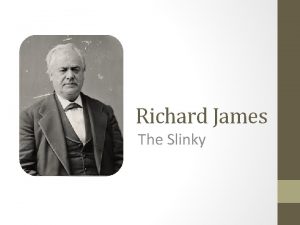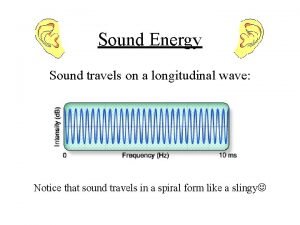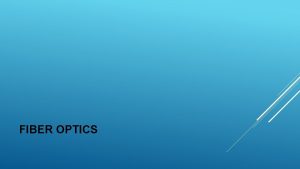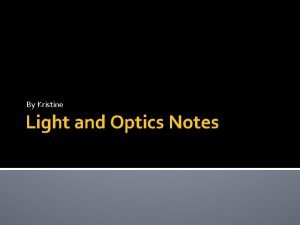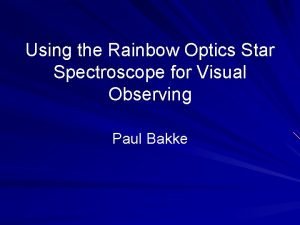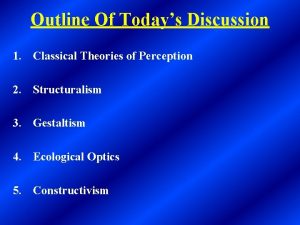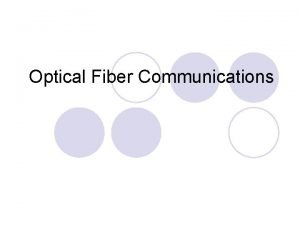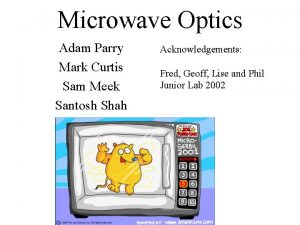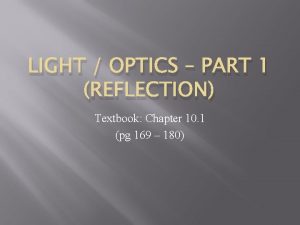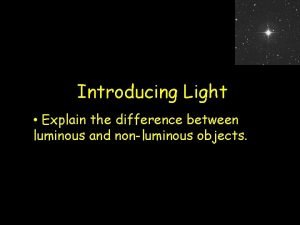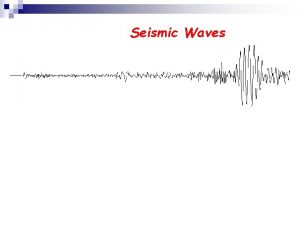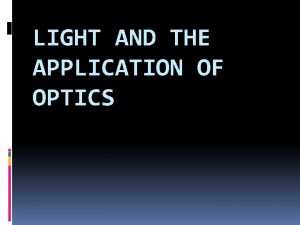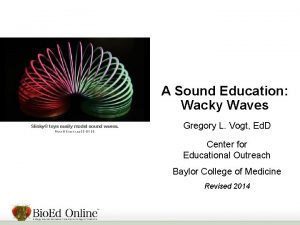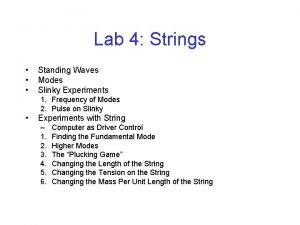Waves and Optics Slinky Fall Demo What will































- Slides: 31

Waves and Optics

Slinky Fall Demo � What will happen? � https: //www. youtube. com/watch? v=e. CMmm. EEy. OO 0

Waves �A wave is a disturbance which travels through a vacuum or medium (air, water, etc) that contains matter � A wave transports ENERGY not matter � A wave in a vacuum does not need a medium to travel – outer space, x-rays, light waves � A wave in a medium needs matter to allow it to travel – sound needs air to travel, outer space = no air = no sound

Electromagnetic (EM) Spectrum � All of light falls within the electromagnetic spectrum � But there is more than the visible light we see � The organization of all electromagnetic waves according to their wave length and frequency � Frequency: the number of cycles in a given unit of time (cycles period) � Amplitude: Maximum distance travelled from equilibrium (no movement) (height of wave)

Diagram Examples Crest Long Wave Length = Low Frequency Wave Length Amplitude Trough λ Short Wave Length (λ) = High Frequency




EM Spectrum of light

Classification on Electromagnetic Spectrum Types Frequency Energy Tech Applications Interesting Facts Radio Waves Infrared Visible Light UV Rays X-Rays Gamma Rays

Types Radio Waves Frequency Lowest Energy Lowest Tech Applications -Radio -TV -Microwaves -Cell phones -MRI Interesting Facts Antennas are used, which connect the signals

Types Infrared Frequency Higher Energy Higher Tech Applications -Night Vision Goggles -Wireless Keyboard -Satellites Interesting Facts -Heat is emitted (given off)- “feels warm” -Some animals use infrared to locate their prey

Types Visible Light Frequency Energy Tech Applications -Laser -microscopes -computer screens Interesting Facts -Only wave length we can see -Red = longest wave length of visible light -Violet = shortest wave length of visible light - When visible light hits water vapour = rainbow

Types UV Light Frequency Energy Tech Applications -Sterilize Equipment -Treatment for Jaundice Interesting Facts -Necessary for Vitamin D -Causes Cancer -Animals can sense them

Types X-Rays Frequency Energy Tech Applications -X-Rays -Baggage and Body inspection at airport Interesting Facts -Too much can also cause cancer

Types Gamma Rays Frequency Highest Energy Highest Tech Applications - Preserving food -Cancer treatment Interesting Facts - Given a + or – charge for cancer treatments -Kills microbes in food

Visible Light � Visible light are electromagnetic waves that are visible to the human eye � They � Do travel in straight lines not need a medium

Reflection � Occurs when light hits a medium and bounces back towards the direction it came from � Reflection is what allows us to see objects: � Lights reflects off an object and travels into the eyes → sight

Reflection Diagram Definitions � Incident Ray: the ray that contacts the surface an object � Reflected Ray: the ray that rebounds � Normal: a line perpendicular to the surface at the point of reflection � Angle of Incidence: the angle formed between the incident ray and the normal � Angle of Reflection: the angle formed by the reflected ray and the normal

Simple Ray Diagram

Laws of Reflection � The angle of incidence is always equal to the angle of reflection � The incident ray and the reflected ray are always in the same plane

Reflection in Mirrors � When parallel light rays contact a surface such as a mirror, their reflections are parallel resulting in a true mirror image � A mirror with no curve, or that is flat is called a plane mirror � http: //www. edumedia-sciences. com/en/media/275 - plane-mirror


Reflection Characteristics � The image appears to be behind the mirror � The distance between the object and the mirror and the reflected image and the mirror are equal in appearance � The image in the mirror is called a virtual image � A virtual image is not real and therefore cannot be captured on a mirror; it is made by lengthening the reflected rays

Uses of Plane Mirrors � The two principles that make plane mirrors useful are: � They change the trajectory (pathway) of light rays by reflection � This increase the observer’s field of vision � Uses: rear-view mirrors, microscopes, and telescopes

Refraction � Refraction: the deviation of a light ray as it passes from one transparent medium to another � Occurs when the pathway of a light ray is changed � Most often occurs as light goes from air to water � Happens because the speed that light travels changes as the medium changes


Lenses � Lenses are made of transparent materials and have at least one curved surface � The curve of a lenses allows it to refract light as it passes through � There are two types of lenses � Converging lenses � Diverging lenses

Surfaces of the Lens Optical Centre (OC) Principal Axis Lens

Focal Point: Converging Lens Ø The focal point of a converging lens is the REAL POINT where the refracted rays ACTUALLY meet when the incident rays run parallel

Focal Point: Diverging Lens Ø The focal point of a diverging lens is the VIRTUAL point from which the refracted light rays APPEAR to emanate when the incident rays run parallel
 Difference between ray optics and wave optics
Difference between ray optics and wave optics Reflection and refraction venn diagram
Reflection and refraction venn diagram Compare and contrast p waves and s waves using venn diagram
Compare and contrast p waves and s waves using venn diagram Richard james toy
Richard james toy What is pitch in sound
What is pitch in sound Waves test answer key
Waves test answer key Low amplitude wave
Low amplitude wave Venn diagram mechanical and electromagnetic waves
Venn diagram mechanical and electromagnetic waves Difference between electromagnetic and mechanical waves
Difference between electromagnetic and mechanical waves Carbon dioxide temperature
Carbon dioxide temperature Difference between matter waves and electromagnetic waves
Difference between matter waves and electromagnetic waves Similarities of mechanical and electromagnetic waves
Similarities of mechanical and electromagnetic waves Seismic waves
Seismic waves Venn diagram of mechanical and electromagnetic waves
Venn diagram of mechanical and electromagnetic waves Difference between constructive and destructive waves
Difference between constructive and destructive waves Longitudinal vs transverse wave
Longitudinal vs transverse wave What type of waves are sound waves? *
What type of waves are sound waves? * Is echolocation transverse or longitudinal
Is echolocation transverse or longitudinal Mechanical vs electromagnetic waves
Mechanical vs electromagnetic waves Is a seismic wave mechanical or electromagnetic
Is a seismic wave mechanical or electromagnetic Phys 241 lecture quizzes
Phys 241 lecture quizzes Disadvantage of optical fiber
Disadvantage of optical fiber Light and optics notes
Light and optics notes Bill nye light energy
Bill nye light energy Rainbow optics star spectroscope
Rainbow optics star spectroscope Gestaltism
Gestaltism Turba optics
Turba optics Losses in optical fiber
Losses in optical fiber Adam ekt eva
Adam ekt eva Bill nye reflection and refraction
Bill nye reflection and refraction Grade 10 optics review
Grade 10 optics review What is the difference between luminous and non-luminous?
What is the difference between luminous and non-luminous?



